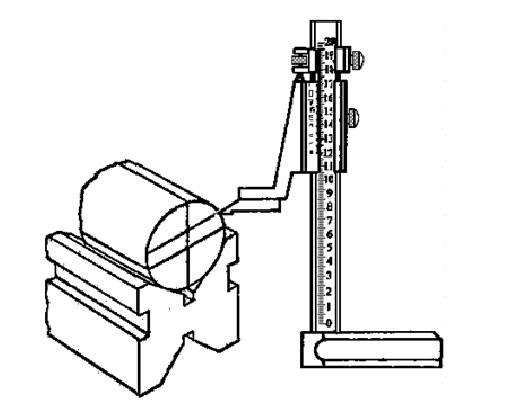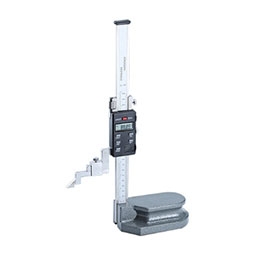A height gauge is an instrument used to measure the height or position of an object and is widely used in various industrial and scientific fields. In this article, key information such as how a height gauge works, its structural components, and the steps to use it will be detailed by sisco.com in order to better understand how a height gauge works.
Components of Height Gauge
- Sensor: The core part of an altitude scale is the sensor. Sensors typically use different technologies such as lasers, ultrasound, mechanical triggering, or optical methods to detect the height or position of an object. These sensors are able to capture distance information about the object in order to make accurate height measurements.
- Control Unit: The control unit is the brain of the height gauge and is responsible for managing and coordinating the work of the sensors. It typically includes a microprocessor, electronic circuitry, and software to process data from the sensors and execute measurement algorithms. The control unit also typically includes a user interface for the operator to interact with the gauge.
- Display: Height gauges are usually equipped with a display for showing measurement results and other relevant information. This display may be a digital display, an LCD screen, or another type of screen, depending on the type and purpose of the altimeter.
- Power Supply Section: In order for the height gauge to function properly, it needs to be powered by a power source. This usually includes batteries, cables, or other power devices to ensure that the gauge has enough power when in use.
- Mechanical: Some height gauges may include mechanical parts, such as a moving platform or support structure, to ensure stability and accuracy of the measurement. These mechanical parts work in conjunction with the sensor and control unit to ensure the accuracy of the measurement.
- Interfaces and Communication Components: Some height gauges also have communication interfaces for data transfer and remote control with computers or other devices. These interfaces can include USB ports, Bluetooth, Wi-Fi, etc. to meet the needs of different applications.

Height Gauge Working Principle
Mechanical Trigger Working Principle: The Mechanical Trigger Height Gauge uses a mechanical sensor to measure the height of an object. The gauge consists of a moving probe head that the operator presses lightly against the target object. When the probe touches the surface of the object, the triggering mechanism stops the movement and records the position of the probe, at which point the height value can be read. This principle is used when direct contact with the target object is required, e.g. to measure the dimensions of a part.
Laser Measuring Principle of Operation: The laser height gauge uses laser technology to measure the height of an object. It calculates the distance by emitting a laser beam and measuring the time or phase difference of the laser beam reflected back. The height gauge emits the laser beam and measures the time it takes for the beam to travel from the instrument to the target object and back again, and the distance can be calculated based on the speed of light and time. This principle is suitable for applications that require non-contact height measurements, such as measuring the height of a building or the distance of a part.
Ultrasonic Measurement Principle of Operation: The ultrasonic height gauge uses ultrasonic technology to measure the height of an object. It emits ultrasonic pulses and measures the round trip time of the pulses to determine the distance. The ultrasonic waves are reflected by the surface of the object after being emitted and the distance is calculated by measuring the time of flight of the pulse. This principle is suitable for situations where the distance of an object needs to be measured, such as measuring the level of a liquid located in a level meter.
The operating principle of height gauges varies depending on the technology and application requirements. Selecting the appropriate operating principle for a particular application is important to obtain accurate height measurements.
Working Steps of Height Gauge
- Height Gauge Preparation: Before using the height gauge, preparations need to be made. This includes installing the batteries or connecting the power supply, ensuring that the sensors and mechanical parts are in proper working order, and setting the parameters and units of the altimeter to suit the specific measurement task.

- Positioning the Target: Aim the height gauge at the target object to be measured. Ensure that the distance and angle of the height gauge to the target are appropriate to obtain accurate measurements. Some height gauges may need to be calibrated or corrected to suit different targets.
- Trigger Measurement: Depending on the measurement principle, trigger the altimeter to begin measurement. This may include operations such as pressing the measurement button, initiating laser emission, or sending ultrasonic pulses.
- Data Processing: The control unit of the gauge processes the data captured by the sensor and calculates the height or position of the target object. This usually involves distance calculation or data analysis in the measuring principle.
- Display of Eesults: The measurement results are usually shown on the instrument's display for the operator to see. The results may be presented numerically, graphically, or in other ways, depending on the design and function of the height gauge.
- Storing or Transferring Data: Some height gauges can store measurement data, such as digital height gauges, for subsequent analysis or reporting. Other height gauges can interface to transfer data to a computer or other device for further processing or archiving.
- Maintenance and Calibration: Maintaining the height gauge is key to ensuring its continued accuracy. This includes regular cleaning, calibration, and maintenance operations to ensure that the height gauge is always in optimum working order. The procedure for working with a height gauge can vary depending on the type and manufacturer of the height gauge, but the above steps provide general guidance.
As a widely used instrument in a variety of applications, height gauges enable the measurement of height and position by means of different sensor technologies. The structural components of a height gauge include a sensor, a control unit, a display, a power supply section, a mechanical section, and an interface. Different measuring principles are suitable for different application scenarios. The accuracy and reliability of height gauges are critical for many industrial and scientific applications, so operators should carefully follow the manufacturer's operating instructions to ensure accurate measurements.

